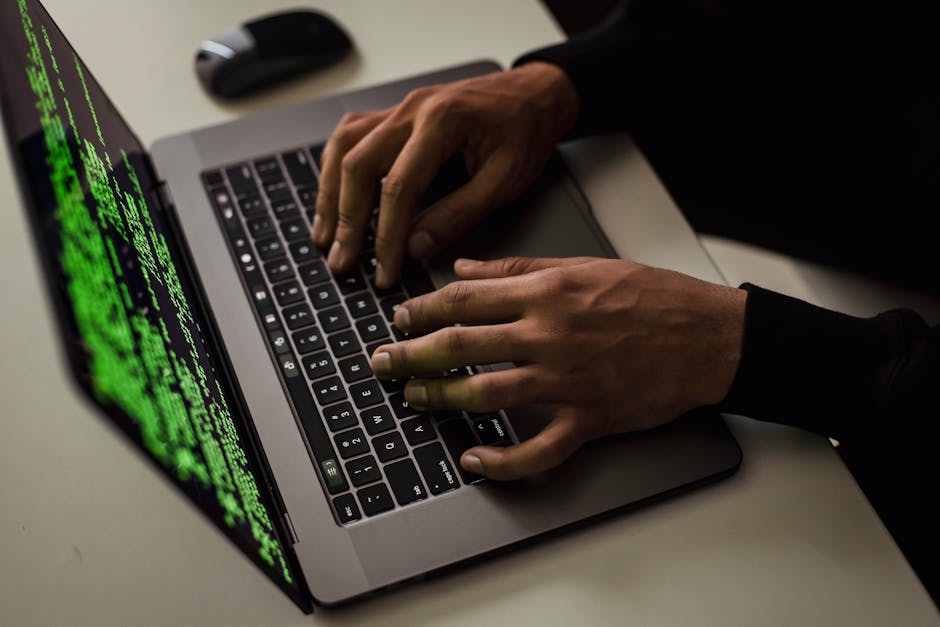The Basics of Cyber Hygiene and Why It Matters for Security
In today’s digital age, where technology pervades every aspect of our lives, ensuring cybersecurity has become more crucial than ever. Cyberattacks are on the rise, with hackers constantly evolving their tactics to exploit vulnerabilities in our systems. This is where the concept of cyber hygiene comes into play. Just as we prioritize personal hygiene to stay healthy, practicing good cyber hygiene is essential to safeguard our digital assets and personal information. In this article, we will delve into the basics of cyber hygiene and explore why it matters for security.
1. What is Cyber Hygiene?

Cyber hygiene refers to the practices and measures individuals and organizations undertake to maintain the health and security of their digital systems. It involves a set of best practices, protocols, and guidelines aimed at preventing cyber threats, such as malware, phishing attacks, ransomware, and data breaches. Just as personal hygiene habits like washing hands and brushing teeth protect us from illnesses, cyber hygiene practices help defend against cyber threats.
Some common aspects of cyber hygiene include regularly updating software and operating systems, using strong and unique passwords, implementing multi-factor authentication, backing up data, being cautious of suspicious emails and links, and educating users about cybersecurity risks. By following these practices, individuals and organizations can significantly reduce their vulnerability to cyberattacks.
2. The Importance of Cyber Hygiene

The importance of cyber hygiene cannot be overstated in today’s interconnected world. With the increasing number of devices connected to the internet, from smartphones and laptops to smart home devices and industrial systems, the attack surface for cybercriminals has expanded exponentially. Without proper cyber hygiene practices in place, individuals and organizations are at a higher risk of falling victim to cybercrimes.
One of the key reasons why cyber hygiene is important is to protect sensitive data. Whether it’s personal information like social security numbers and credit card details or company secrets and intellectual property, data is a valuable asset that cybercriminals are eager to exploit. By practicing good cyber hygiene, organizations can secure their data and prevent costly data breaches.
In addition to protecting data, cyber hygiene also helps in maintaining the integrity and availability of systems. Cyberattacks can disrupt operations, cause downtime, and result in financial losses. By regularly updating systems, applying security patches, and monitoring for suspicious activities, organizations can ensure the smooth functioning of their IT infrastructure.
3. Real-Life Examples of Cyber Hygiene Practices

Real-life examples can help illustrate the importance of cyber hygiene practices in preventing cyber incidents. Let’s consider a few scenarios where cyber hygiene played a crucial role in mitigating cybersecurity risks:
3.1. Phishing Awareness Training
A large financial institution conducts regular phishing awareness training for its employees to educate them about the risks of phishing emails. As a result, employees are able to identify and report suspicious emails, preventing a potential phishing attack that could have compromised sensitive customer data.
3.2. Regular Software Updates
A small e-commerce business regularly updates its website software and plugins to patch security vulnerabilities. This proactive approach helps in preventing malware infections and website defacements, ensuring a secure shopping experience for customers.
3.3. Multi-Factor Authentication Implementation
An online service provider implements multi-factor authentication for customer accounts, adding an extra layer of security beyond passwords. This measure protects customer accounts from unauthorized access, reducing the risk of credential stuffing attacks.
4. Cyber Hygiene Best Practices

While the specifics of cyber hygiene practices may vary depending on the context and environment, there are some universal best practices that individuals and organizations should follow to enhance their cybersecurity posture. Here are some essential cyber hygiene best practices:
4.1. Keep Software Up to Date
Regularly update software, including operating systems, applications, and security tools, to patch known vulnerabilities and protect against exploits.
4.2. Use Strong and Unique Passwords
Create complex passwords that are difficult to guess and use a different password for each account to prevent credential stuffing attacks.
4.3. Enable Multi-Factor Authentication
Add an extra layer of security by enabling multi-factor authentication for accounts, requiring an additional verification step beyond passwords.
4.4. Backup Data Regularly
Back up critical data regularly to secure it against ransomware attacks and hardware failures. Store backups in a separate location to prevent data loss in case of a cyber incident.
4.5. Educate Users About Cybersecurity Risks
Provide training and awareness programs to educate users about common cybersecurity threats, such as phishing, social engineering, and malware, to promote a security-conscious culture.
4.6. Implement Network Segmentation
Segment networks to restrict access to sensitive data and systems, reducing the impact of a potential breach and containing the spread of malware.
4.7. Monitor Systems for Suspicious Activities
Deploy intrusion detection and prevention systems to monitor network traffic and detect anomalies or malicious behavior, enabling timely response to potential security incidents.
5. Future Implications of Cyber Hygiene
As technology continues to advance and cyber threats become more sophisticated, the future implications of cyber hygiene are far-reaching. With the proliferation of Internet of Things (IoT) devices, artificial intelligence (AI), and cloud computing, the attack surface for cybercriminals will expand, necessitating stronger cyber hygiene practices.
Organizations will need to invest in cybersecurity technologies and talent to defend against evolving threats, while individuals will have to be more vigilant in safeguarding their digital identities. Cyber hygiene will play a crucial role in securing the digital ecosystem and protecting against emerging cyber risks, such as deepfake attacks, ransomware as a service, and supply chain vulnerabilities.
6. Common Misconceptions About Cyber Hygiene
Despite the importance of cyber hygiene, there are some common misconceptions that can hinder its adoption and effectiveness. Let’s address a few misconceptions about cyber hygiene:
6.1. Only Large Organizations Need to Worry About Cyber Hygiene
While large organizations are often targeted by cybercriminals due to their valuable data and resources, small and medium-sized businesses are equally at risk. Cyber hygiene is essential for all organizations, regardless of size, to protect against cyber threats.
6.2. Cyber Hygiene Is a One-Time Effort
Cyber hygiene is an ongoing process that requires regular maintenance and updates. It’s not a one-time effort but a continuous commitment to securing digital systems and data against evolving threats.
6.3. Cybersecurity Tools Can Replace Cyber Hygiene Practices
While cybersecurity tools like firewalls, antivirus software, and intrusion detection systems are important, they are not a substitute for good cyber hygiene practices. Security tools should complement cyber hygiene efforts, not replace them.
7. FAQs About Cyber Hygiene
7.1. What are the consequences of neglecting cyber hygiene?
Neglecting cyber hygiene can have severe consequences, including data breaches, financial losses, reputational damage, and legal liabilities. Organizations that fail to practice good cyber hygiene are at a higher risk of falling victim to cyberattacks.
7.2. How can individuals improve their cyber hygiene practices?
Individuals can improve their cyber hygiene practices by staying informed about cybersecurity risks, using strong and unique passwords, enabling multi-factor authentication, updating software regularly, and being cautious of suspicious emails and links.
7.3. What role does employee training play in cyber hygiene?
Employee training plays a crucial role in promoting cyber hygiene within organizations. By educating employees about cybersecurity risks and best practices, organizations can empower their workforce to be vigilant and proactive in protecting against cyber threats.
To Wrap Things Up
In conclusion, cyber hygiene is the foundation of a strong cybersecurity posture, essential for individuals and organizations to protect against cyber threats. By following best practices such as keeping software up to date, using strong passwords, enabling multi-factor authentication, and educating users about cybersecurity risks, we can mitigate the risks of cyberattacks and safeguard our digital assets.
As technology evolves and cyber threats become more sophisticated, the importance of cyber hygiene will only increase. It is imperative for all of us to prioritize cybersecurity, adopt good cyber hygiene practices, and stay informed about emerging threats to ensure a secure digital future.




